#ethno folk
Text
youtube
Eihwar - Fenrir
#music#nordic#norse#norse mythology#mythology#fenrir#thor#odin#tyr#snow#cold#atmosphere#mood#viking music#shamanic music#nordic music#folk#ethno folk#Youtube
68 notes
·
View notes
Text
Vyshyvanka Day is an international holiday that aims to preserve the original folk traditions of creating and wearing ethnic embroidered Ukrainian clothes called vyshyvanka. It is celebrated every third Thursday of May. This year the way and the style of celebrating are "slightly" different.
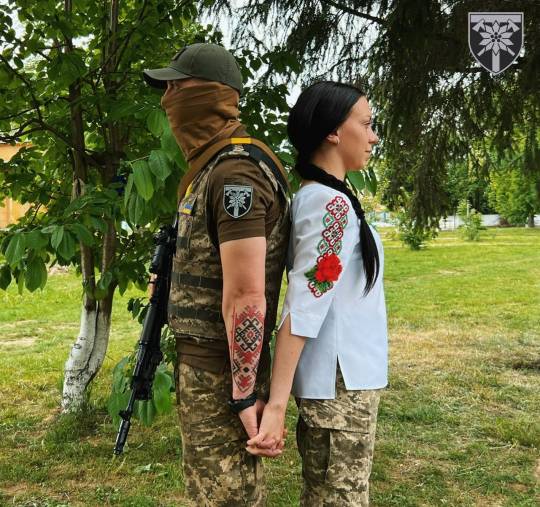

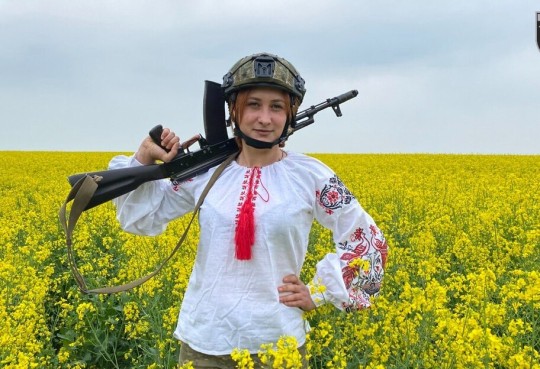
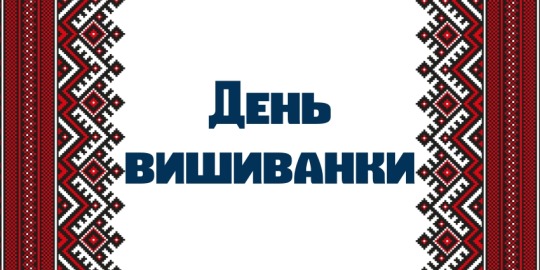
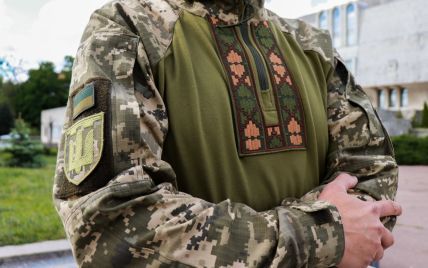
#ukraine#украина#україна#russia#россия#росія#putin#путин#путін#война#war#vyshyvanka#війна#вишиванка#вышиванка#embroidery#cross stitch#ethno#ethnic#folk#фолк#етно#этно#этника#етніка#clothes#satin stitch#гладь#одяг#одежда
284 notes
·
View notes
Text
Krampus - The Horned Devil of Alpine Folklore
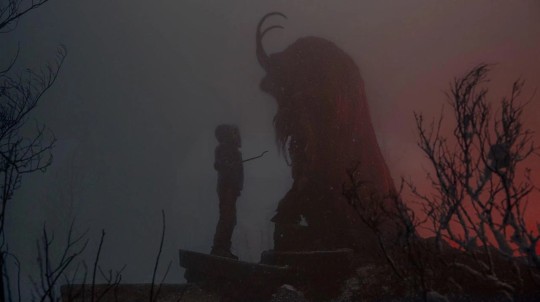
A still from the movie 'Krampus' (2015), directed by Michael Dougherty
The sound of cloven hooves
and the clanking of chains
is all you hear -
as Krampusnacht,
it is near.
The name of 'Krampus' might not be that well-known in our big world, but in the recent years this folkloric figure has made it to the big screen, appearing in a central role in the movie Krampus (2015).
The origins of Krampus are unknown, although this being most likely originates from the pre-Christian tradition. It appears mostly in the still-living traditions of the Alpine regions, where on the 5th of December the spirit of Krampus strolls the streets through men dressed in dark suits of sheep or goat skin, with cowbells around their hips, impersonating Krampus while they run around scaring the children. This night is commonly referred to as 'Krampusnacht', and it is followed by the day of Saint Nicholas (December 6th), who subordinates Krampus and leads him by his chains as the saint leaves the good-behaving children their presents. However, if the children were naughty, they might be given sticks instead of presents by Krampus itself, or even worse - Krampus might take them to his lair by trapping them in a sack it drags with it for these occasions only.

Krampusnacht in Tyrol, 2013. Photo by Sean Gallup.
Folklorically speaking, Krampus is classified as a horned devil type of creature. As such, some anthropologists have suggested that it may have been a certain pagan horned deity or spirit that has been assimilated into Christian mythology by becoming a Devil-like being.
However, no matter what its original story is, Krampus is a prime example from the wild, dark and primeval pre-Christian imaginarium. A story so ancient that it barely has a name, but one so persistent that it still inspires and evolves.
-Heidi (@theatrum-tenebrarum)
#krampus#krampusnacht#devil#alps#folk#folklore#darkfolklore#folkhorror#folklorist#anthropology#anthropologist#ethno#ethnology#myth#myths#rural#winter#stnicholas#december#wintersolstice#story#storytime#storyteller#spooky christmas#horror#writing#interesting#folkloreinpopularmedia#own
12 notes
·
View notes
Audio

(Gránat) https://soundcloud.com/granat_band/misyac-msyats
0 notes
Text
Full soundtrack in free download here https://devisumusic.bandcamp.com/album/hanamachi
#neoclassical#neofolk#neo folk#free music#ambient music#experimental music#ambient#experimental#soundtrack#world music#ethnic#ethno#Bandcamp
0 notes
Photo

unknown
0 notes
Audio
#ukrainianmusic#ukrainian#music#ukraine#canada#paris#kyiv#fragmenti#україна#канада#париж#київ#ukrajina#muzyka#muzika#muzik#folk#alexis kochan#ethno#indie#ancient#world#ambient
0 notes
Text
Reading list for Afro-Herbalism:
A Healing Grove: African Tree Remedies and Rituals for the Body and Spirit by Stephanie Rose Bird
Affrilachia: Poems by Frank X Walker
African American Medicine in Washington, D.C.: Healing the Capital During the Civil War Era by Heather Butts
African American Midwifery in the South: Dialogues of Birth, Race, and Memory by Gertrude Jacinta Fraser
African American Slave Medicine: Herbal and Non-Herbal Treatments by Herbert Covey
African Ethnobotany in the Americas edited by Robert Voeks and John Rashford
Africanisms in the Gullah Dialect by Lorenzo Dow Turner
Africans and Native Americans: The Language of Race and the Evolution of Red-Black Peoples by Jack Forbes
African Medicine: A Complete Guide to Yoruba Healing Science and African Herbal Remedies by Dr. Tariq M. Sawandi, PhD
Afro-Vegan: Farm-Fresh, African, Caribbean, and Southern Flavors Remixed by Bryant Terry
Barracoon: The Story of the Last “Black Cargo” by Zora Neale Hurston
Big Mama’s Back in the Kitchen by Charlene Johnson
Big Mama’s Old Black Pot by Ethel Dixon
Black Belief: Folk Beliefs of Blacks in America and West Africa by Henry H. Mitchell
Black Diamonds, Vol. 1 No. 1 and Vol. 1 Nos. 2–3 edited by Edward J. Cabbell
Black Faces, White Spaces: Reimagining the Relationship of African Americans to the Great Outdoors by Carolyn Finney
Black Food Geographies: Race, Self-Reliance, and Food Access in Washington, D.C. by Ashanté M. Reese
Black Indian Slave Narratives edited by Patrick Minges
Black Magic: Religion and the African American Conjuring Tradition by Yvonne P. Chireau
Black Nature: Four Centuries of African American Nature Poetry edited by Camille T. Dungy
Blacks in Appalachia edited by William Turner and Edward J. Cabbell
Caribbean Vegan: Meat-Free, Egg-Free, Dairy-Free Authentic Island Cuisine for Every Occasion by Taymer Mason
Dreams of Africa in Alabama: The Slave Ship Clotilda and the Story of the Last Africans Brought to America by Sylviane Diouf
Faith, Health, and Healing in African American Life by Emilie Townes and Stephanie Y. Mitchem
Farming While Black: Soul Fire Farm’s Practical Guide to Liberation on the Land by Leah Penniman
Folk Wisdom and Mother Wit: John Lee – An African American Herbal Healer by John Lee and Arvilla Payne-Jackson
Four Seasons of Mojo: An Herbal Guide to Natural Living by Stephanie Rose Bird
Freedom Farmers: Agricultural Resistance and the Black Freedom Movement by Monica White
Fruits of the Harvest: Recipes to Celebrate Kwanzaa and Other Holidays by Eric Copage
George Washington Carver by Tonya Bolden
George Washington Carver: In His Own Words edited by Gary Kremer
God, Dr. Buzzard, and the Bolito Man: A Saltwater Geechee Talks About Life on Sapelo Island, Georgia by Cornelia Bailey
Gone Home: Race and Roots through Appalachia by Karida Brown
Ethno-Botany of the Black Americans by William Ed Grime
Gullah Cuisine: By Land and by Sea by Charlotte Jenkins and William Baldwin
Gullah Culture in America by Emory Shaw Campbell and Wilbur Cross
Gullah/Geechee: Africa’s Seeds in the Winds of the Diaspora-St. Helena’s Serenity by Queen Quet Marquetta Goodwine
High on the Hog: A Culinary Journey from Africa to America by Jessica Harris and Maya Angelou
Homecoming: The Story of African-American Farmers by Charlene Gilbert
Hoodoo Medicine: Gullah Herbal Remedies by Faith Mitchell
Jambalaya: The Natural Woman’s Book of Personal Charms and Practical Rituals by Luisah Teish
Just Medicine: A Cure for Racial Inequality in American Health Care by Dayna Bowen Matthew
Leaves of Green: A Handbook of Herbal Remedies by Maude E. Scott
Like a Weaving: References and Resources on Black Appalachians by Edward J. Cabbell
Listen to Me Good: The Story of an Alabama Midwife by Margaret Charles Smith and Linda Janet Holmes
Making Gullah: A History of Sapelo Islanders, Race, and the American Imagination by Melissa Cooper
Mandy’s Favorite Louisiana Recipes by Natalie V. Scott
Medical Apartheid: The Dark History of Medical Experimentation on Black Americans from Colonial Times to the Present by Harriet Washington
Mojo Workin’: The Old African American Hoodoo System by Katrina Hazzard-Donald
Motherwit: An Alabama Midwife’s Story by Onnie Lee Logan as told to Katherine Clark
My Bag Was Always Packed: The Life and Times of a Virginia Midwife by Claudine Curry Smith and Mildred Hopkins Baker Roberson
My Face Is Black Is True: Callie House and the Struggle for Ex-Slave Reparations by Mary Frances Berry
My Grandmother's Hands: Racialized Trauma and the Pathway to Mending Our Hearts and Bodies by Resmaa Menakem
On Her Own Ground: The Life and Times of Madam C.J. Walker by A'Lelia Bundles
Papa Jim’s Herbal Magic Workbook by Papa Jim
Places for the Spirit: Traditional African American Gardens by Vaughn Sills (Photographer), Hilton Als (Foreword), Lowry Pei (Introduction)
Post Traumatic Slave Syndrome by Dr. Joy DeGruy
Rooted in the Earth: Reclaiming the African American Environmental Heritage by Diane Glave
Rufus Estes’ Good Things to Eat: The First Cookbook by an African-American Chef by Rufus Estes
Secret Doctors: Ethnomedicine of African Americans by Wonda Fontenot
Sex, Sickness, and Slavery: Illness in the Antebellum South by Marli Weiner with Mayzie Hough
Slavery’s Exiles: The Story of the American Maroons by Sylviane Diouf
Soul Food: The Surprising Story of an American Cuisine, One Plate at a Time by Adrian Miller
Spirituality and the Black Helping Tradition in Social Work by Elmer P. Martin Jr. and Joanne Mitchell Martin
Sticks, Stones, Roots & Bones: Hoodoo, Mojo & Conjuring with Herbs by Stephanie Rose Bird
The African-American Heritage Cookbook: Traditional Recipes and Fond Remembrances from Alabama’s Renowned Tuskegee Institute by Carolyn Quick Tillery
The Black Family Reunion Cookbook (Recipes and Food Memories from the National Council of Negro Women) edited by Libby Clark
The Conjure Woman and Other Conjure Tales by Charles Chesnutt
The Home Place: Memoirs of a Colored Man’s Love Affair with Nature by J. Drew Lanham
The Jemima Code: Two Centuries of African American Cookbooks by Toni Tipton-Martin
The President’s Kitchen Cabinet: The Story of the African Americans Who Have Fed Our First Families, from the Washingtons to the Obamas by Adrian Miller
The Taste of Country Cooking: The 30th Anniversary Edition of a Great Classic Southern Cookbook by Edna Lewis
The Tuskegee Syphilis Study: An Insiders’ Account of the Shocking Medical Experiment Conducted by Government Doctors Against African American Men by Fred D. Gray
Trace: Memory, History, Race, and the American Landscape by Lauret E. Savoy
Vegan Soul Kitchen: Fresh, Healthy, and Creative African-American Cuisine by Bryant Terry
Vibration Cooking: Or, The Travel Notes of a Geechee Girl by Vertamae Smart-Grosvenor
Voodoo and Hoodoo: The Craft as Revealed by Traditional Practitioners by Jim Haskins
When Roots Die: Endangered Traditions on the Sea Islands by Patricia Jones-Jackson
Working Conjure: A Guide to Hoodoo Folk Magic by Hoodoo Sen Moise
Working the Roots: Over 400 Years of Traditional African American Healing by Michelle Lee
Wurkn Dem Rootz: Ancestral Hoodoo by Medicine Man
Zora Neale Hurston: Folklore, Memoirs, and Other Writings: Mules and Men, Tell My Horse, Dust Tracks on a Road, Selected Articles by Zora Neale Hurston
The Ways of Herbalism in the African World with Olatokunboh Obasi MSc, RH (webinar via The American Herbalists Guild)
1K notes
·
View notes
Text
Confession on Israel-Palestine
Ladies and gentlemen and nonbinary folks, if you want to know how my current break from social media has been going, I’m afraid that I can’t say much. I don’t feel like I’ve made much progress in self-rehabilitation. It doesn’t help that I haven’t been able to meet with the clinical social worker for counseling often enough due to delays in the first two meetings. It doesn’t help that the warehouse job still wears me out terribly. It doesn’t help that the weather here in Indiana hasn’t been quite right yet for outdoor meditation.
I’ve pondered when I might resume making and posting original work to my social media pages. I haven’t decided yet. That choice may depend on what the next month or so are like for me.
The main reason why I wrote this journal entry is to make a confession. Several factors led me to go off on my current hiatus from social media, which I intend to discuss in depth at a later day. However, what especially provoked me to quit posting and declare my absence was the latest flare-up in violence in Israel-Palestine and the back-and-forth polemics on social media. I felt unable to meaningfully address it.
I acknowledge the ethno-nationalist administrations in Israel that have grown more radically right-wing over the years. I cannot dismiss the reports of long-standing human rights abuses in Israel. I cannot dismiss the suffering and death involved in the establishment of the modern state of Israel. I dare not dismiss Palestinians who suffer and die whenever the violence flares up in that little strip of land! I further acknowledge that most people who join demonstrations against Israel have only the best of intentions.
Why haven’t I spoken out more often on Palestine, though? There are still too many cases where condemnation of Israel is a thin veil for condemnation of the Jewish people as a whole. Is Judaism not an ancient ethno-religion that has long-standing ties to Eres Yisra’el, the Land of Israel, however widely dispersed it may have been? As a white European living on Turtle Island, am I not much, much more of an alien than a Jewish person living near Jerusalem? Even considering ethnocentrism within the Zionist movement, is that still not a serious response to the long, tragic history of marginalization, persecution, expulsion, and eventual genocide? Doesn’t anti-Jewish hatred persist today? Doesn’t anti-Jewish propaganda come in the form of dog-whistles? Speaking as an ex-Catholic, I’ve seen Catholic fundamentalists claim to reject “racial antisemitism”—in a conveniently narrow sense—while espousing their usual anti-Jewish narratives.
Those sorts of dog-whistles have made me wary of much (not all, but much) of the rhetoric that I’ve seen. I don’t want to shut down or belittle Jewish people who express pain and fear. I do acknowledge the increasingly sharp divides—especially generational divides—within the Jewish community over Israel. I was also surprised to read about the historical real-world alternatives to political Zionism, most notably the Bundist movement, whose main principle was about establishing Jewish cultural enclaves throughout the Diaspora while agitating for socialist justice.
What of the Jewish people who still express fear of antisemitism and still express attachment to the land of Israel? I’m not supposed to dismiss their voices and stories as settler-colonial propaganda that needs to be censored, am I? I’m not supposed to regard them all as hyper-privileged, lying, greedy, bloodthirsty, all-controlling aliens, am I? I’m not supposed to ridicule them as passive-aggressive crybaby Nazis worthy only of isolation, am I? I’m not supposed to declare them all guilty of genocide and needing to be punished accordingly for the rest of their lives, am I? I’m not supposed to judge them all as Bad Jews and leave only a tiny remnant of Good Jews, am I?
Over the course of the reactions, rants, and reflections that I’ve written into my private spiral-bound journal, I noted a fixation on Jewish safety and Jewish freedom. Why? Euro-American guilt? Ex-Catholic guilt? Have Israel-supporting organization exaggerated the prevalence of anti-Jewish hatred? I’ve read of dissension within such organizations as the Anti-Defamation League and J Street. Surely, though, claiming that the entire world celebrates and pampers the Jewish people would be completely ridiculous.
You might recall the incidents of anti-Jewish intimidation and violence that sometimes appear in news outlets. Aren’t there people with big voices like Nick Fuentes who would gladly do gods-know-what to the Jewish people if they somehow took power? Hasn’t anti-Jewish propaganda spread beyond Europe as well? Aren’t there Islamic fundamentalists who call for the destruction of Jewish people, branding them as conspiring overlords or as apes and pigs? I hear about Jews and Muslims living in harmony in the Middle East in the olden days, but that narrative does strike me as sounding too good to be true—haven’t Jews faced discrimination and violence there too? I’m willing to be educated on the nuances within said narrative.
I trust that you understand that I reject the notion of collectively punishing Muslims, Arabs, or Palestinians. I wish for no group of people to be collectively punished, especially a group that has notoriously suffered domination and alienation and worse over centuries. Has something gone wrong my desire to stand with Jewish people? Is that why I’ve neglected to publicly speak for Palestinians? Once again, I dare not deny that Palestinians face suffering and death under the watch of a powerful Israeli state backed by other powerful states.
I’ve gotten the sense that I’m being pressured to choose which people to support—but I would be very happy to be proven wrong. I am not yet totally confident that the free-free-Palestine movement lacks undercurrents of demonizing and punishing Jewish people—but, again, I would be very happy to be proven wrong. The point that I’ve been gesturing towards this whole time is this: I believe in harmonious and joyous co-existence of various peoples and cultures on lands that they work together on healing and enriching. I’ll grant that phrases like “it’s complicated” can be cop-outs, but they can surely also be expressions of uncertainty over how to best resolve serious problems.
I ask you to write to and call your local elected leaders and put pressure on them to not only demand a ceasefire but also demand full civil and human rights for Palestinians. Surely that is something that we can do. I even wrote and mailed letters to Jewish organizations such as the ones mentioned previously, asking them to hold Israel’s leaders and elites accountable, stand up more forcefully for Palestinians, and seriously engage with Jewish anti-Zionists—not to lecture them as some sort of superior Aryan, but to encourage dialog as a fellow civil-rights activist. Did that in itself risk “mansplaining” antisemitism? I trust that I had good intentions. I wish for peace and freedom for all, and I wish to understand more fully how that can become a reality.
#palestine#israel#israel palestine#palestinians#jewish people#antisemitism#history#social justice#ceasefire#human rights#middle east#arabs
22 notes
·
View notes
Text
A Thing Of Vikings Chapter 109: Shift Happens

Chapter 109: Shift Happens
Prior to the Norse Reformation, the ethno-religion of the Norse people was technically a folk religion with mixed shamanistic practices and no centralized doctrines. Lacking a canonical unifying text and relying primarily on oral transmission, the particulars of practice and belief differed from region to region, with some particular beliefs and practices being idiosyncratic in comparison to the whole of the religion—which was itself an offshoot of the archaic Germanic religion that had existed in central and western Europa during the prior eras. While pre-Reformation texts which are not from Berk and related tribes are comparatively rare, idiosyncratic differences can still be seen between what examples we do have. It was only later, with Berk's doctrinal canonization which overwrote a great deal of the variation in regional belief, that the Norse religion adopted a set of canonical texts.
One such example of a divergence in belief is that of Sif, Thor's wife. In eastern Norse beliefs, she was primarily an Earth fertility and farming goddess, with her golden hair being an allusion to fields of grain and her marriage to Thor being a symbolic bond between the earth and sky—especially that of life-giving rain on farmers' fields.
In contrast, Sif's depictions are expanded in the beliefs of the Eirish Sea Norse which were eventually canonized by the Norse Reformation. Textual analysis and primary sources show the primary movers of the divergence being the Bog Burglar tribe, which began as a breakaway Sif and Freyja cult sometime in the 800s AD. Here, Sif is still a goddess of the fertility of the earth—a fertility which is enhanced by the blood spilled on the ground by killing attackers attempting to destroy her home, hearth and family. In these depictions, Sif's role is expanded to be similar to that of Freyja, as a deadly warrior woman. However, in contrast to Freyja's focus on the offensive aspects of warfare, Sif's focus is decidedly defensive, that of a mother protecting her children and standing her ground with a refusal to retreat, and a fertility goddess who is completely willing to use the blood and bones of the fallen to enrich her fields.
—The Second Flowering Of Yggdrasil: An Analysis Of The Norse Resurgence, 1710
AO3 Chapter Link
~~~
My Original Fiction | Original Fiction Patreon
14 notes
·
View notes
Text



(c) Yana Gavrysh
#ukraine#украина#україна#art#illustration#ethnic#ethno#folk#арт#иллюстрация#ілюстрація#етно#етніка#фолк#этно#этника
67 notes
·
View notes
Note
it’s hilarious that you’re pretending that many of the folks protesting the kimono exhibit were not also japanese
Yeah “many” is definitely not the correct word to use lmfao the people that did that even acknowledged it which is why they had to twist their ethno-cultural-nationalist rhetoric in weird ways bc they had more white people protesting
The blog Japanese-American in Boston (which was about Japanese-American cultural events in the Boston area especially with museums) has a good first-hand description of it and how her view of the protest was really effected by the spectacle of white people whitesplaing to Japanese people how they’re the ones that know better when it comes to “protecting culture” by imposing Western-invented rules on who can wear a kimono that most Japanese people don’t believe in or want It really says something how so many people want to bury all the Japanese people saying “I have no idea what the fuck these people are talking about and I’m not with them they’re not even Japanese” simply to uplift their fetishistic ideals of cultural and blood purity
235 notes
·
View notes
Text
TW: anti-Semitic and anti-indigenous hate speech
Imagine being so evil and bigoted that you use the opportunity of an indigenous Jew of colour agreeing with you on AI, to launch a flurry of unprovoked attacks based entirely on their ethnicity and your own conscious choice of buying into historical revisionism. But oh well, white else is new? Britain didn't exactly turn left with its last elections, sooooooooooooooooooo I guess some people over there got bold.
Jews are proven indigenous to Canaan, today called Israel. That is a hard fact you can look up. I'm literally born exactly there to Mizrahim (brown Middle Eastern Jews) and forcibly entitled to calling it my rightful home. My birth certificate literally says Tel Aviv, not whatever "go back to Europe" country these neo-Nazis think we Jews originate from. Denying Jewish indigeneity in Canaan-by-any-other-name is identical to Holocaust denial, because you cannot commit genocide against people who don't exist, and nothing can come to exist without first originating somewhere. So denying our proven origin = denying our existence = denying our genocide. Rachel did that by calling me a colonizer in my own proven indigenous homeland. And a sexist slur, but...
Before you go "No you stole the land": No, Rachel's people colonized it like they did everything that wasn't bolted down, then returned it to its returning indigenous folks who were fleeing from pogroms in the Arab world and the Holocaust. We can discuss the crimes the state of Israel commits without spreading lies about Jews' relationship to that land, see. One is legitimate criticism, the other is anti-Semitic, and since we're an ethno-religion, automatically racist as well. I can retrace my personal family back to "Canaan" (Israel) to Babylonian exile. I am indigenous.

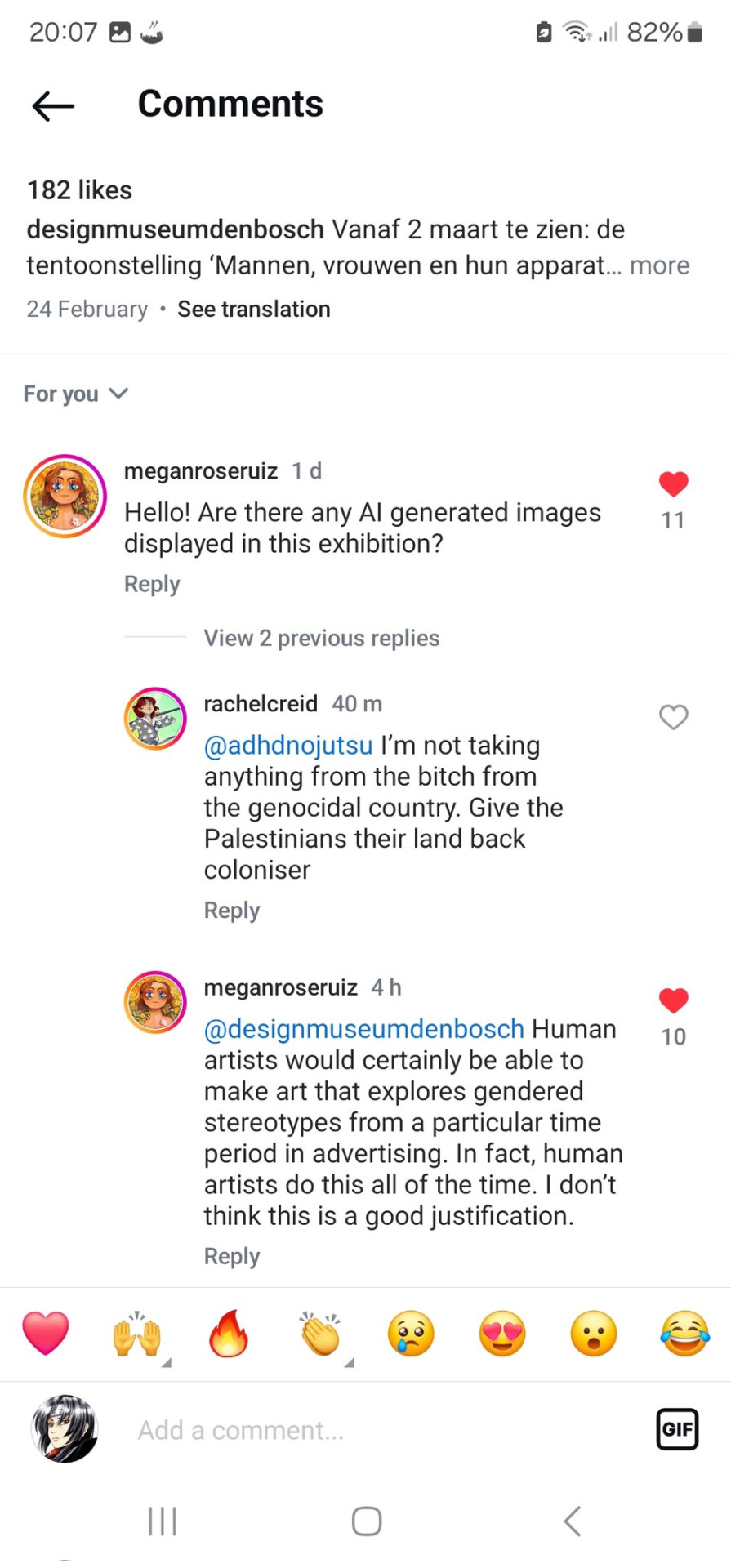
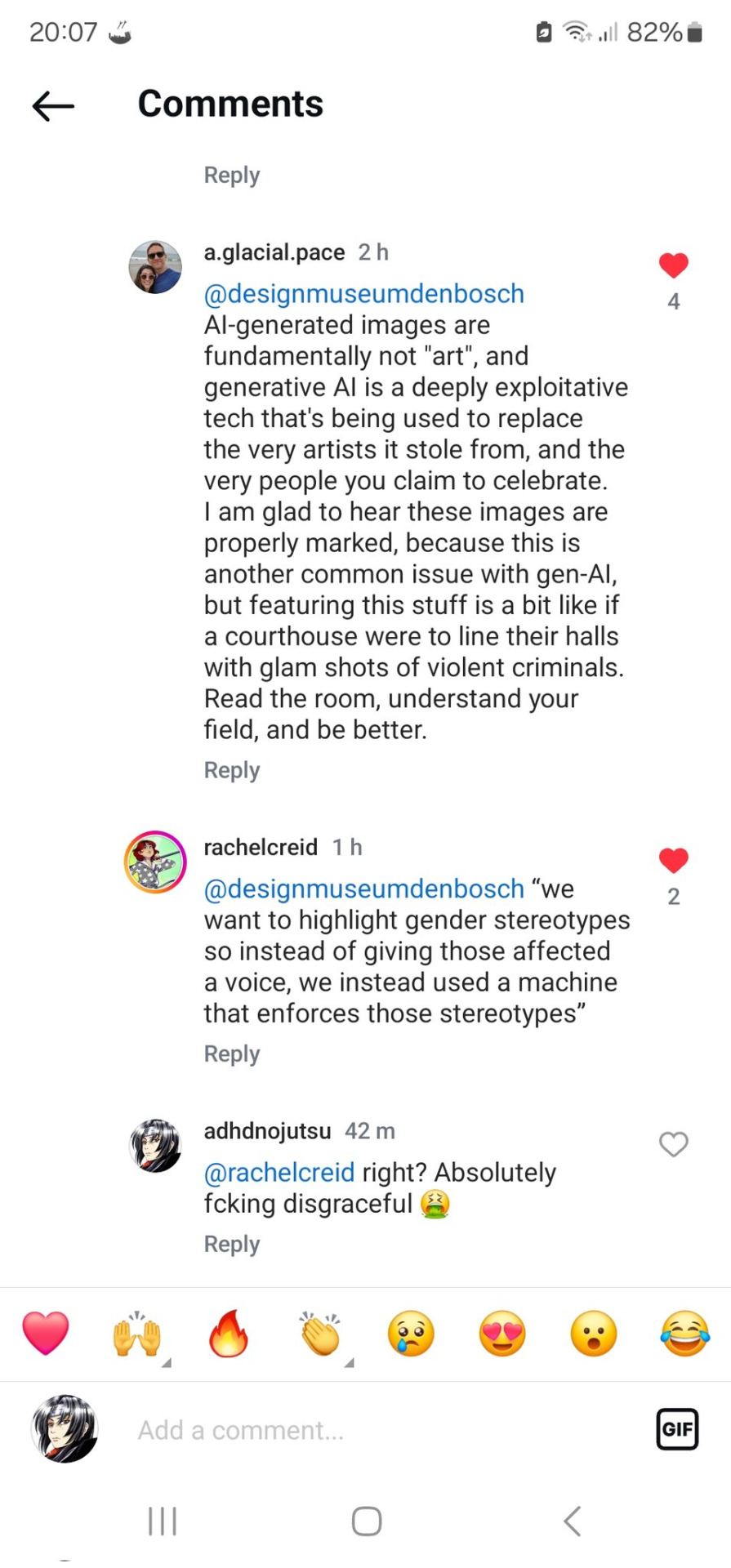
#animators on tumblr#animator art#2d animator#2d animation#calling all animators#animation#2d art#artists on tumblr#leftist antisemitism#antisemitism#jewish artist#jewish history#indigenous#indigenous rights#indigenous history#indigenous people#genocide denial#holocaust denial#blood libel#jew hatred#rachel reid#historical revisionism#canaan#call out post#call out tw
10 notes
·
View notes
Note
hello! i just wanted to say that your account is one of the best positive representations of greek culture i’ve seen. it’s hard to find people online with culture accounts (especially greek 😭) that aren’t staunch ethno-nationalists with crazy expansionist or facist politics. i myself have a greek culture account on tik tok and instagram but i focus more on clothing and greek folk culture. i always find myself coming back to your account compared to the ones on tik tok because you always post the most educational and thought provoking things (a lot of people on tik tok also suffer from extreme brain rot 💀), i also love how you write you’re very gifted. that’s all i wanted to say! i hope you have a great day 🫶🏼
You made my day beautiful single-handedly with this amazing mail. Thank you so so so much for all your kind words.
I know what you are saying by the way. It is so baffling how certain people think that - I don’t know - they support what they love when they are steeped into negativity and hate speech. It’s not only that they are very unpleasant people by default and definition, they are also stupid. How on earth do you expect to attract different people when you are being aggressive at everything that is not you? Immediately you put your readers in a position to defend their own country or culture as if there is any competition between you and them. What’s certain is that those people won’t be thinking about your *precious* country and culture and history again with positivity any time soon. You just killed the good mood and the good intentions some people out there and far away made the choice to show towards your side. It’s so counter-productive in a hilarious yet profoundly sad way.
(Of course I do get a little sassy 😜 sometimes but I am pretty sure it is for good reason when it happens.)
If you are comfortable sharing them, you can comment or send another mail with your TikTok and Instagram. My followers perhaps would like to check them out since you share the same mindset! I don’t have either type of account but I might be an invisible passenger there from time to time lolol If you don’t want to share, it’s totally cool, ignore this!
Thanks again so much for all that you said, ΕΥΧΑΡΙΣΤΩΩΩΩ

13 notes
·
View notes
Text
You can always tell a trustworthy source of information when they admit that they chose to remove nuance because it hurts their arguments

Okay, let's talk about the "a bit of nuance" they didn't think is relevant.
Tibetan Buddhism is an open religion, and the Dalai Lama has encouraged people outside of their faith to adopt Tibetan Buddhist practices. Given that appropriation requires taking something with permission or consent and ZERO Tibetan spiritual leaders have opposed Westerners using this term, (either the tulpamancy community or new age spiritualists before us,) there's no merit to his claim. The appropriation myth was invented and driven by anti endos speaking for an ethno-religious group they aren't a part of for syscourse points.
Tulpamancy is not through "sheer will" but a process of repeated interaction with a learning mental simulation. It is a science, if a soft science, with well over a hundred guides as methods become more advanced and our understanding of the process grows. Dismissing tulpas as being made through "sheer will" is either ill-informed or dishonest. Given the OP admitting to ignoring nuance that didn't suit their arguments, I'm assuming it's the latter.
These so-called "outrageous claims" are supported by numerous researchers. Most notably are probably Dr. Michael Lifshitz, Dr. Samuel Veissière and Dr. Tanya Luhrmann. The former two are professors in psychiatry at McGill University, the latter is a professor in Psychological Anthropology at Stanford University. Meanwhile, there has never been any psychologist to deny the existence of tulpamancy as a valid psychological phenomenon.
In researching tulpamancy, one goal is to develop techniques to help treat DID.
Here is a bit more nuance they don't want you to hear:
Dr. Samuel Veissière: “My understanding is [that] hearing voices and communicating with identities, spirits, imaginary friends, tulpas — it all draws on a completely normal propensity. This is nonpathological voice-hearing; tulpamancers have come to desire auditory and verbal hallucinations. There is a small but growing body of evidence that lives have been improved in this practice. It helps individuals with social anxiety issues — it aids in theory of mind, the ability to relate to other people. Children who develop imaginary friends are better able to understand people in real life — they develop socio-cognitive abilities to infer what other people want and desire. It’s trainable.”
Dr. Michael Lifshitz: “If something doesn’t hurt, then it’s not pathological. Think about rumination. Maybe I think a lot, but it’s not depressive unless it’s making me depressed. Being disassociated — having the feeling of multiple agents living inside of you — in and of itself is not fundamentally pathological. The thing that’s clear is that tulpamancy helps people. Tulpamancy allows folks to feel more relaxed and better able to socialize. In fact, we’re interested in how we could use it for developing better treatments for those who do have DID or psychosis. Perhaps we can teach [patients] how to engage with voices or personalities in a way that might be useful [or] therapeutic.”
Anti-endos and anti-tulpas will always omit "nuance" like this because it would require acknowledging that their own beliefs have no basis in actual science.
You cannot be pro-science and anti-tulpa because the anti-tulpa ideology is not and never has been based in science or supported by scientists.
#syscourse#endogenic#tulpa#tulpamancy#plural#multiplicity#endogenic system#tulpas#tulpa system#system#systems#pro endogenic#psychology#psychiatry#mental health#science#pro tulpa#anti tulpa#actually a system
82 notes
·
View notes
Text

Yuri Dyrin. January cat.Yuri Dyrin "January Cat." Decorated in a frame. Oil on canvas, 2001
Yuri Alexandrovich Dyrin - was born in the village. Kochkurovo, Dubensky district of MASSR, currently lives in Saransk, a member of the Union of Artists of Russia, Honored Artist of the Republic of Mordovia, painter, teacher, bright representative of the ethno-futuristic direction in the art of Mordovia, director of the State Budgetary Educational Institution of Secondary Vocational Education Sychkova." In 1991. Graduated from the Saransk Art School named after F. C. Sychkova, in 2005 he received a diploma of higher education of Moscow State University named after N.P. Ogareva with a degree in Cultural Studies. Since 1992, he has been a participant in republican, regional, all-Russian, foreign, international exhibitions, salons, festivals. Personal exhibitions of Yuri Dyrin were held in Saransk, Sarov, Nizhny Novgorod, Yaroslavl, Sestroretsk, Prague, Moscow, Tallinn, Tartu, Helsinki, Magdeburg, city of Corey, Chistern (Italy), Stavern (Norway), Paris (France). The artist's works are stored in the State Budgetary Institution "Mordovian Republican Museum of Fine Arts named after S.D. Erzi," Museum of the city of Sarov, private collections in Russia, Finland, Norway, Germany, USA, Great Britain. Yuriy Dyrin is the production designer of the cartoon "Kuigorozh" based on the Moksha folk tale. The cartoon was created in the project "Mountain of Gems" at the Moscow studio "Pilot". The cartoon "Kuigorozh" became the winner of the film award "Golden Eagle", received the Audience Award at the Animation Film Festival in Suzdal, and on April 10, 2008 it became the main event of the Republican Animation Film Festival "Mountain of Gems" in Saransk.Yuri Alexandrovich takes an active part in the public life of the Union of Artists He is a member of the board of the regional branch of the Union of Artists of Mordovia, heads the section of the youth branch of the Union of Artists, actively and fruitfully works with young artists of Mordovia.
Mozaika Art
26 notes
·
View notes